ATI Respiratory Exam Questions & Answers
Document Content and Description Below
ATI Respiratory Exam Questions & Answers-A nurse is assessing a patient who has a chest tube in place following a thoracic surgery. Which of the following findings indicates a need for intervention: ... 1. Fluctuation of drainage in the tubing with inspiration. 2. Continuous bubbling in the water seal chamber. 3. Drainage of 75 mL in the first hour after surgery. 4. Several small, dark-red blood clots in the tubing. - 2. Continuous bubbling in the water seal chamber. Continuous bubbling in the water seal chamber suggests an air leak. A nurse is caring for an elderly patient who suffers from COPD with pneumonia. The nurse should monitor the patient for which of the following acid-base imbalances? 1. Respiratory alkalosis 2. Respiratory acidosis 3. Metabolic alkalosis 4. Metabolic acidosis - 2. Respiratory acidosis Respiratory acidosis is a common complication of COPD. This complication occurs because patients who have COPD are unable to exhale carbon dioxide due to a loss of elastic recoil in the lungs. A nurse is preparing to administer cisplatin IV to a patient with lung cancer. The nurse should identify that which of the following findings is an adverse effect of this medication? 1. Hallucinations 2. Pruritis 3. Hand and foot syndrome 4. Tinnitis - 4. Tinnitis An adverse effect of cisplatin is ototoxicity, which can cause tinnitis. A nurse is preparing to assist a provider to withdraw arterial blood from a patient's radial artery for measurement of ABG. Which of the following actions should the nurse plan to take? 1. Hyperventilate the patient with 100% oxygen prior to obtaining the specimen. 2. Apply ice to the site after obtaining the specimen. 3. Perform an Allen's test prior to obtaining the specimen. 4. Release pressure applied to the puncture site 1 minute after the needle is withdrawn. - 3. Perform an Allen's test prior to obtaining the specimen. The nurse should ensure that circulation to the hand is adequate from the ulnar artery in case the radial artery is injured from the blood draw. The most common site for withdrawal of arterial blood gases is the radial artery. A nurse is providing instructions about pursed-lip breathing for a patient who has COPD with emphysema. The nurse should explain that this breathing technique accomplishes which of the following: 1. Increases oxygen intake 2. Promotes carbon dioxide elimination 3. Uses the intercostal muscles 4. Strengthens the diaphram - 2. Promotes carbon dioxide elimination A patient who has COPD with emphysema should use pursed-lip breathing when experiencing dyspnea. This is one of the simplest ways to control dyspnea. It slows the patient's pace of breathing, making each breath more effective. Pursed-lip breathing releases trapped air in the lungs and prolongs exhalation to slow the breathing rate. This improved breathing pattern moves carbon dioxide out of the lungs more efficiently. A nurse is preparing a patient for a thoracentesis. In which of the following positions should the nurse place the patient: 1. Lying flat on the affected site 2. Prone with arms raised over the head 3. Supine with the head of the bed elevated 4. Sitting while leaning forward over the bedside table - 4. Sitting while leaning forward over the bedside table When preparing a patient for a thoracentesis, the nurse should have the patient sit on the edge of the bed and lean forward over the bedside table because this position maximizes the space between the patient's ribs and allows for aspiration of accumulated fluid and air. A nurse on a med-surg unit is caring for a patient who is postoperative following a hip replacement surgery. The patient reports feeling apprehensive and restless. Which of the follow findings should the nurse recognize as an indication of a PE: 1. Sudden onset of dyspnea 2. Tracheal deviation 3. Bradycardia 4. Difficulty swallowing - 1. Sudden onset of dyspnea Clinical manifestations of a PE have a rapid onset. Dyspnea occurs due to reduced blood flow to the lungs. A nurse is planning care for a patient who has COPD and is malnourished. Which of the following recommendations to promote nutritional intake should the nurse include in the plan: 1. Eat high-calorie foods first 2. Increase intake of water at meal times 3. Perform active range of motion exercises before meals 4. Keep saltine crackers nearby for snacking - 1. Eat high-calorie foods first The client who has COPD often experiences early satiety. Therefore, the patient should eat high-calorie foods first. A nurse is developing a teaching plan for a patient about preventing acute asthma attacks. Which of the following points should the nurse plan to discuss first: 1. How to eliminate environmental triggers that precipitate attacks 2. The patient's perception of the disease process and what might have triggered attacks in the past 3. The patient's medication regimen 4. Manifestations of respiratory infections - 2. The patient's perception of the disease process and what might have triggered attacks in the past The nurse should apply the nursing process priority-setting framework. The nurse can use the nursing process to plan patient care and prioritize nursing actions. Each step of the nursing process builds on the previous step, beginning with assessment. Before the nurse can formulate a plan of action, implement a nursing intervention, or notify a provider of a change in a patient's status, the nurse must first collect adequate data from the patient. Assessing the patient will provide the nurse with knowledge to make an appropriate decision. Therefore, the first step the nurse should take is to assess the patient's current knowledge. A nurse in a provider's office is assessing a patient who states he was recently exposed to TB. Which of the following findings is a clinical manifestation of pulmonary TB: 1. Pericardial friction rub 2. Weight gain 3. Night sweats 4. Cyanosis of the fingertips - 3. Night sweats Night sweats and fevers are clinical manifestations of TB. A nurse is planning care for a patient following placement of a chest tube 1 hour ago. Which of the following actions should the nurse include in the plan of care: 1. Clamp the chest tube if there is continuously bubbling in the water seal chamber 2. Keep the chest tube drainage system at the level of the right atrium 3. Tape all of the connections between the chest tube and the drainage system 4. Empty the collection chamber and record the amount of drainage every 8 hours - 3. Tape all of the connections between the chest tube and the drainage system The nurse should tape all of the connections to ensure that the system is airtight and prevent the chest tubing from accidentally disconnecting. A nurse on a medical unit is caring for a patient who apirated gastric contents prior to admission. The nurse administers 100% oxygen by nonbreather mask after the patient reports severe dyspnea. Which of the following findings is a clinical manifestation of acute respiratory distress syndrome (ARDS): 1. Tympanic temperature of 38 C (100.4 F) 2. PaO2 50 mm Hg 3. Rhonchi 4. Hypopnea - 2. PaO2 50 mm Hg The patient who has manifestations of ARDS has a low PaO2 level even with the administration of oxygen. Hypoxemia after treatment with oxygen is a manifestation of ARDS. [Show More]
Last updated: 3 months ago
Preview 1 out of 21 pages
Instant download
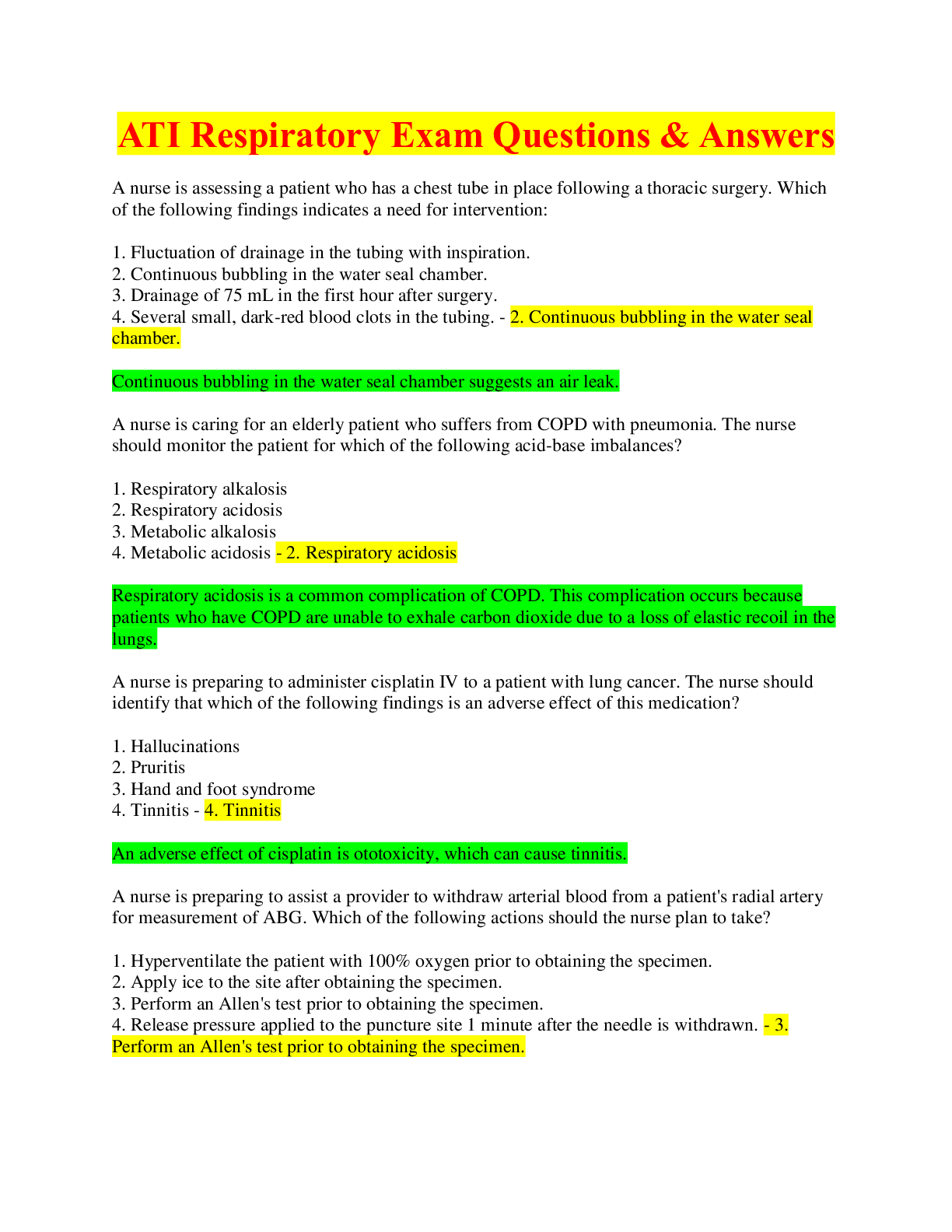
Buy this document to get the full access instantly
Instant Download Access after purchase
Add to cartInstant download
Reviews( 0 )
Document information
Connected school, study & course
About the document
Uploaded On
Mar 10, 2024
Number of pages
21
Written in
Additional information
This document has been written for:
Uploaded
Mar 10, 2024
Downloads
0
Views
14






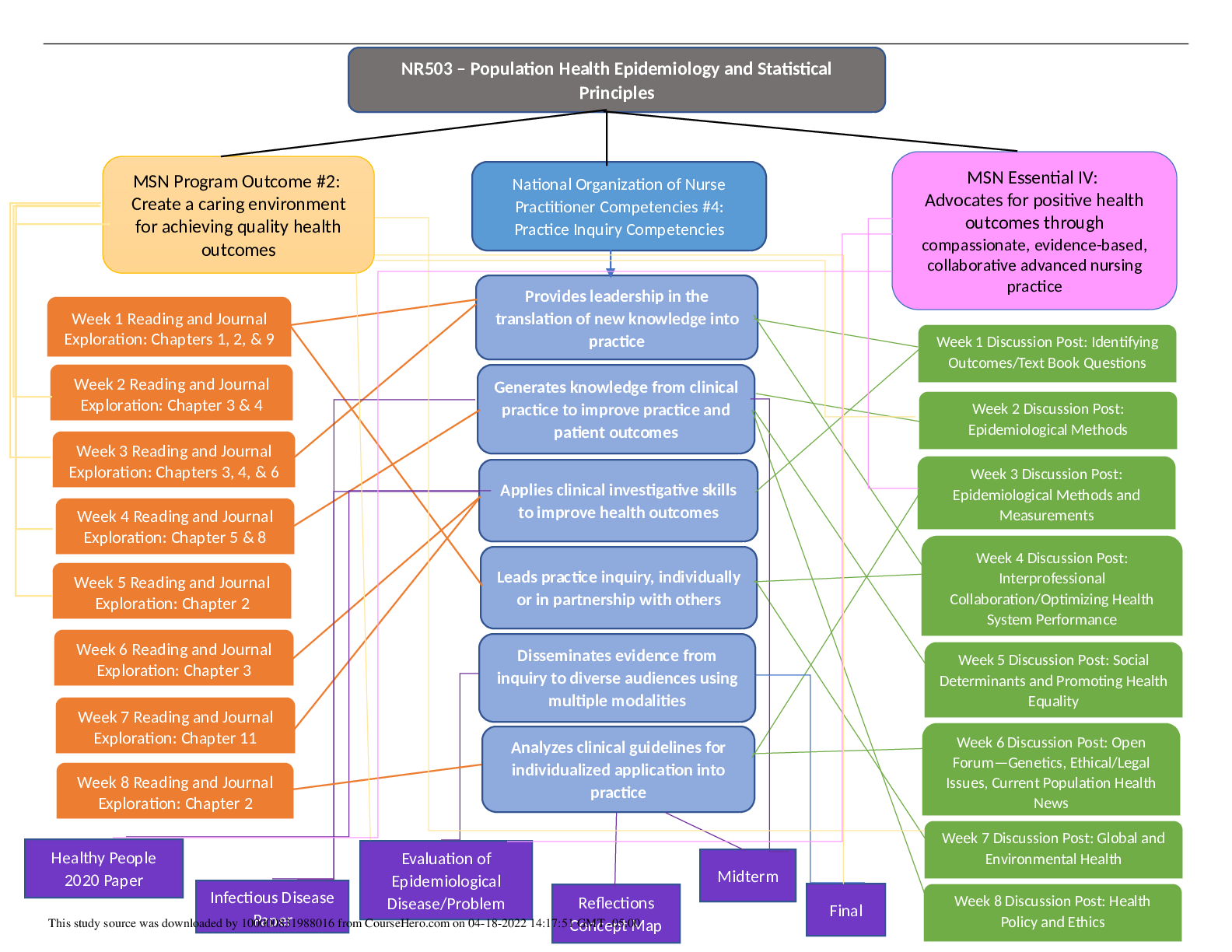

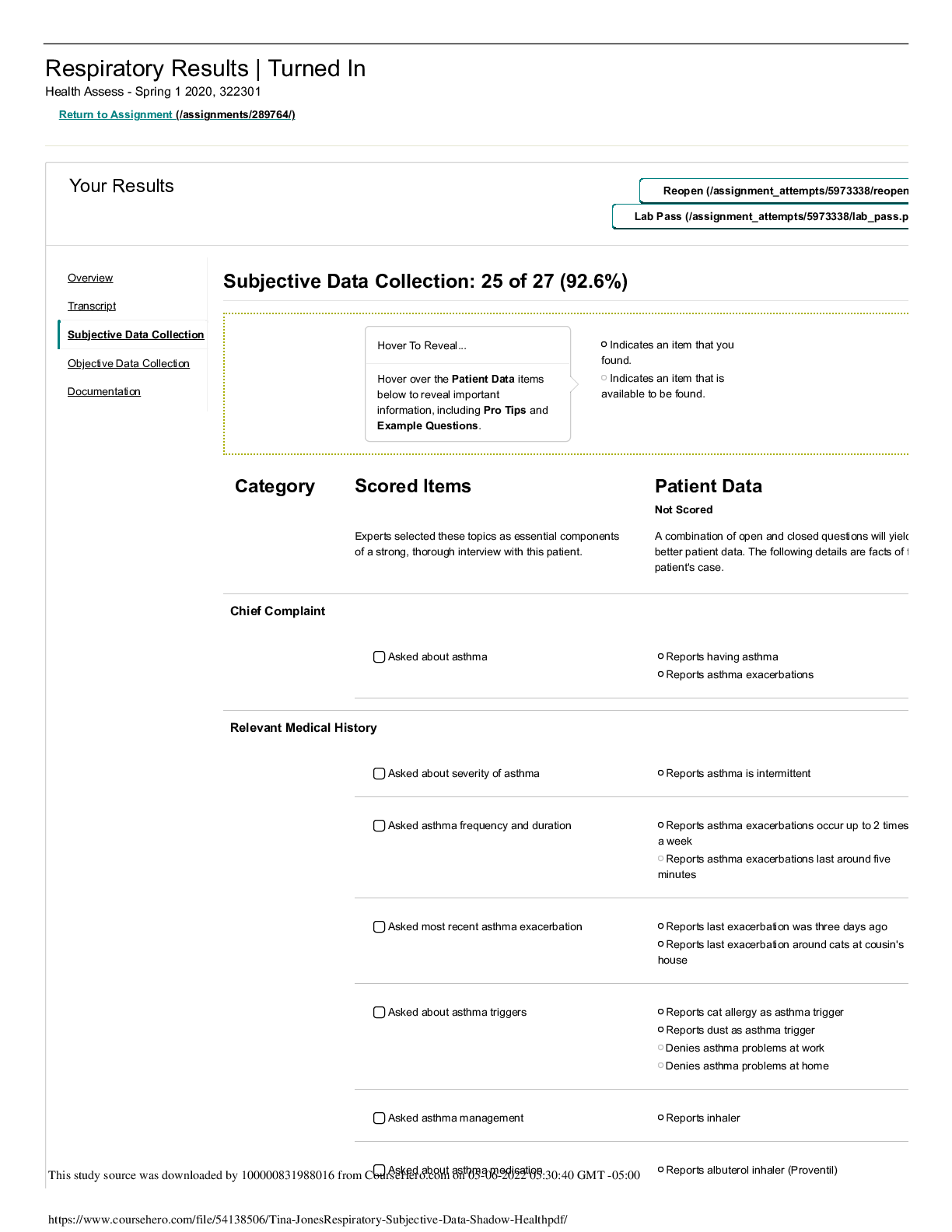
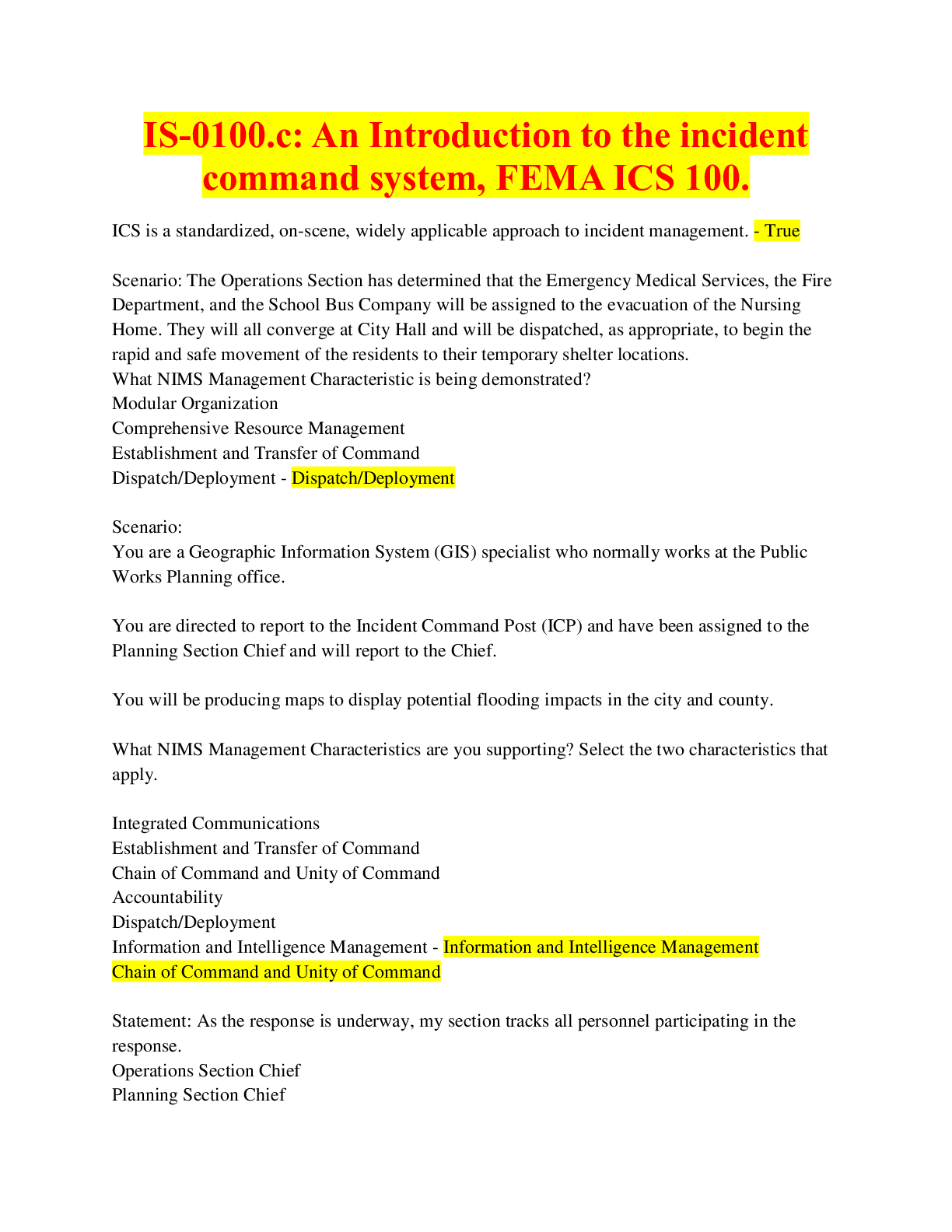



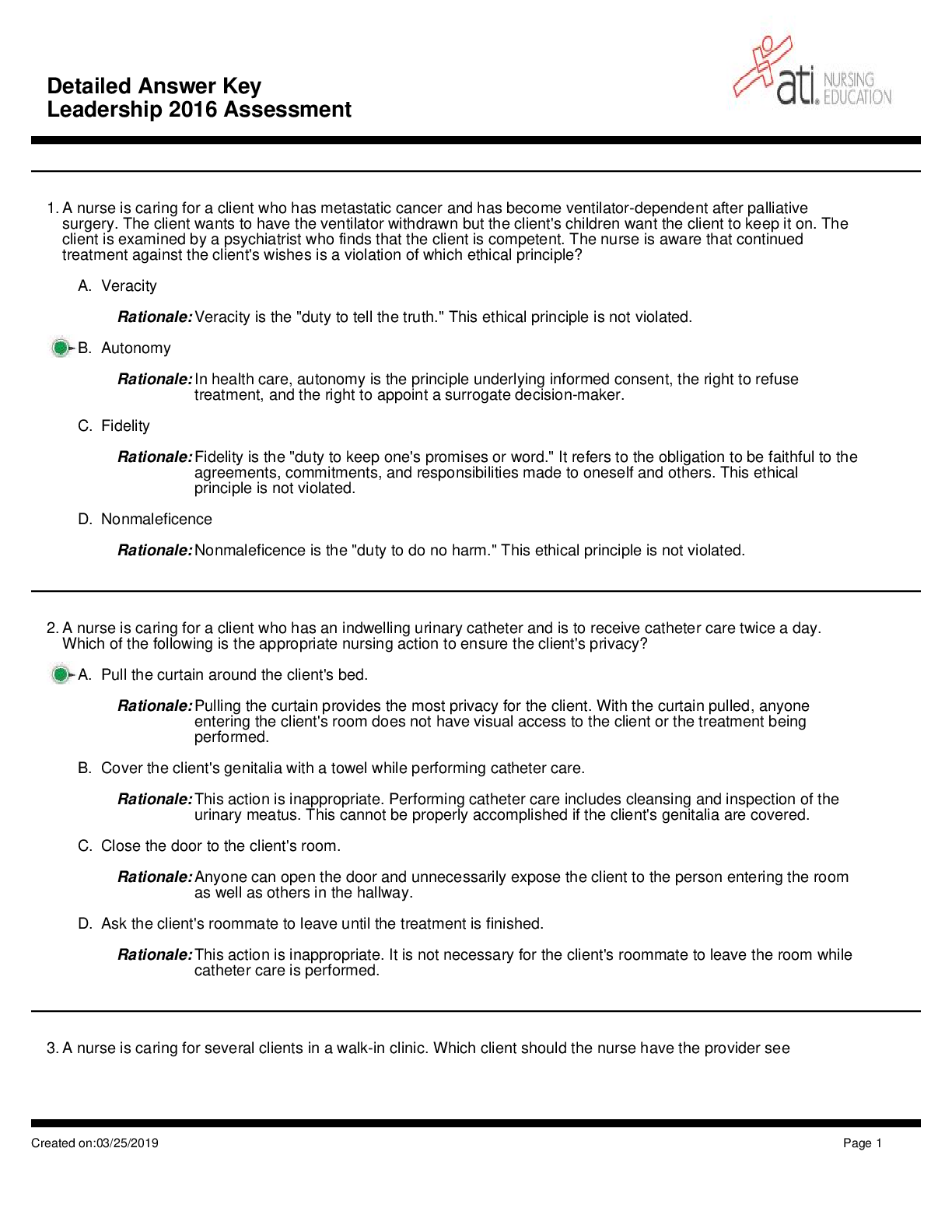
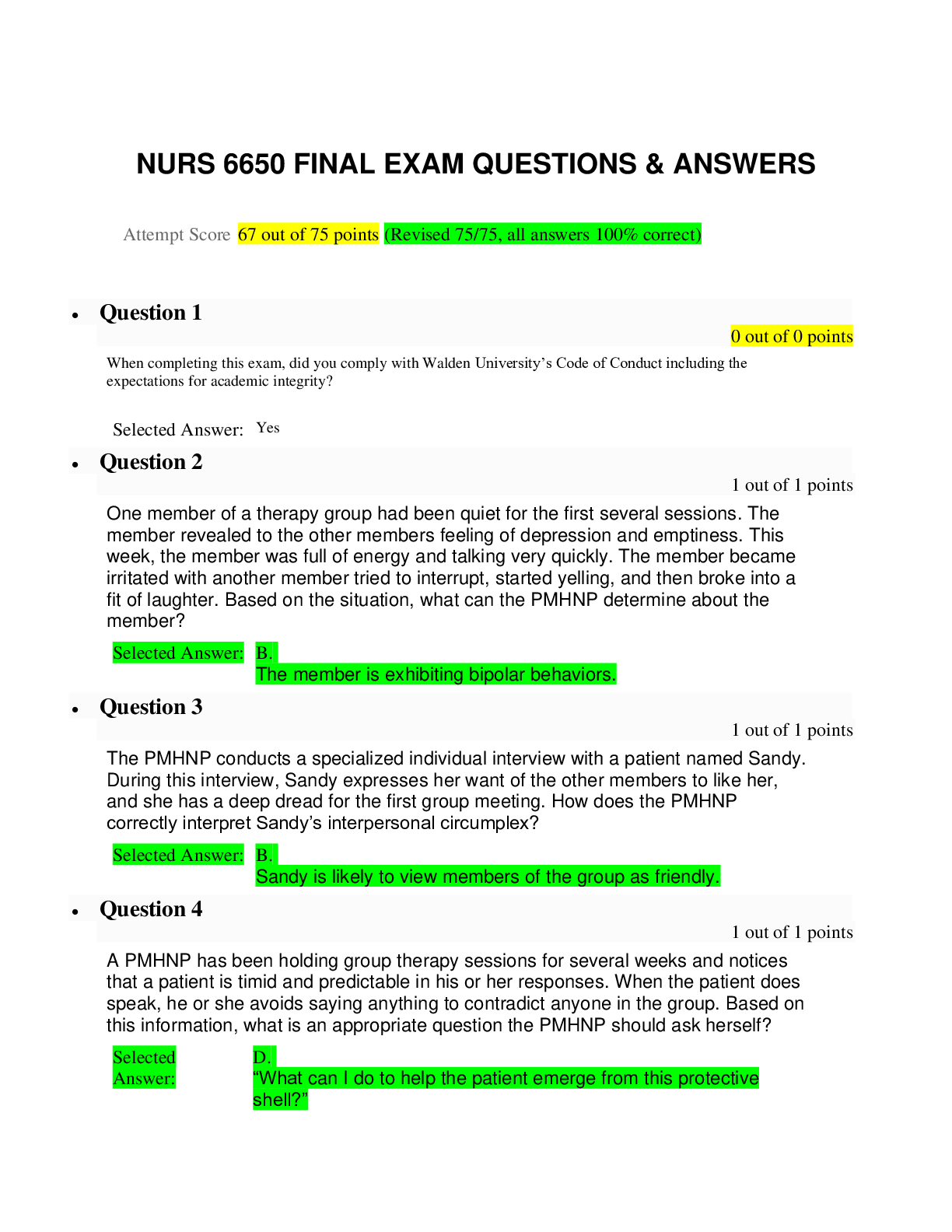
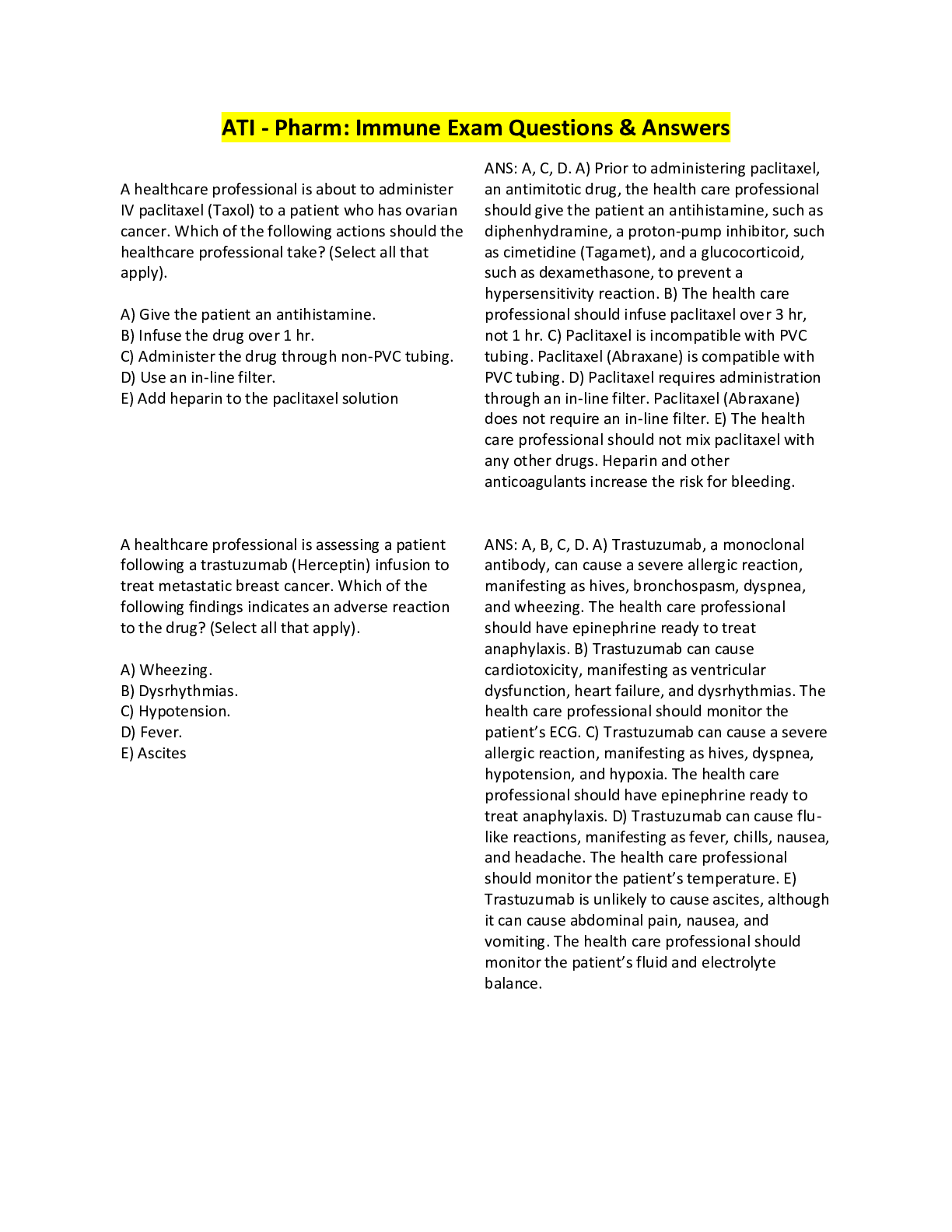
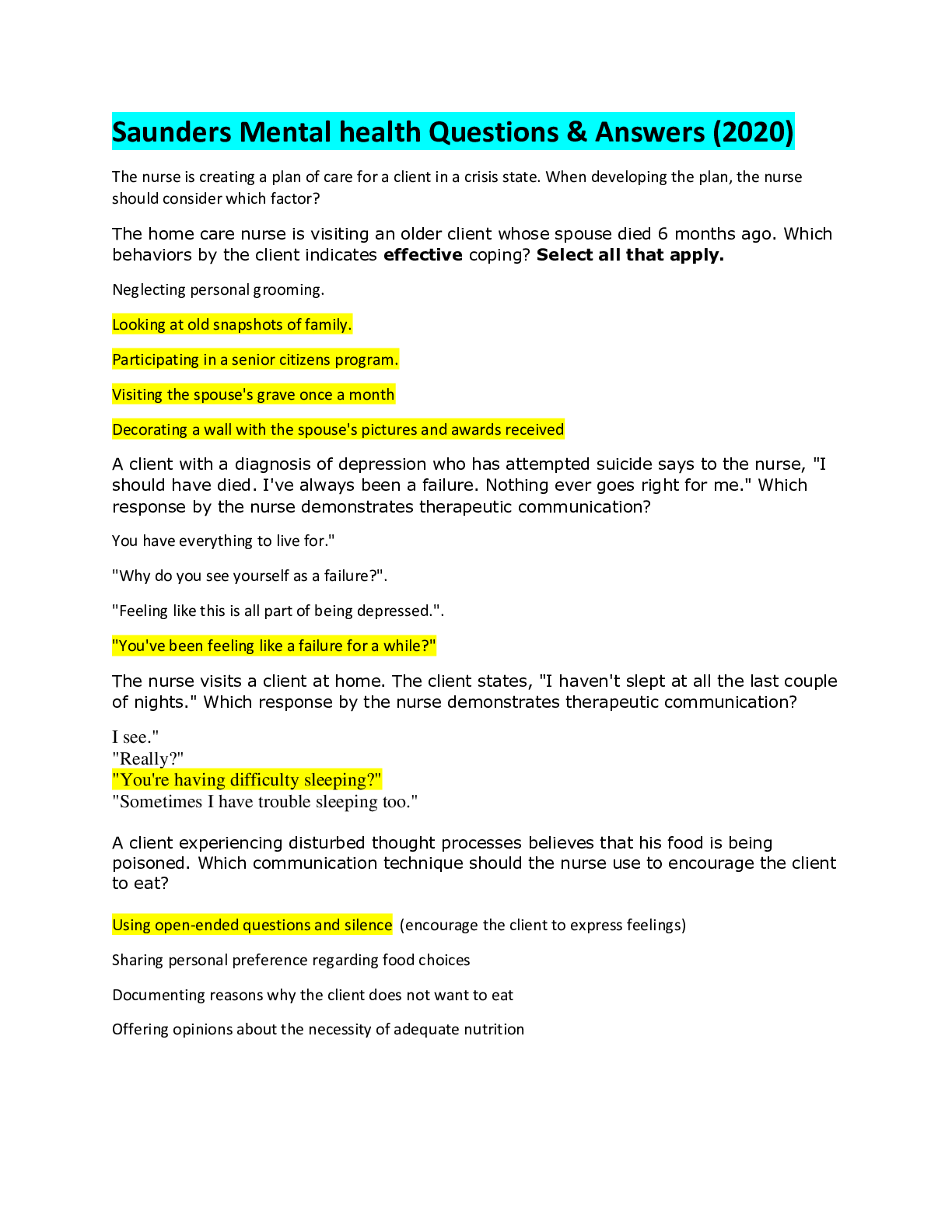
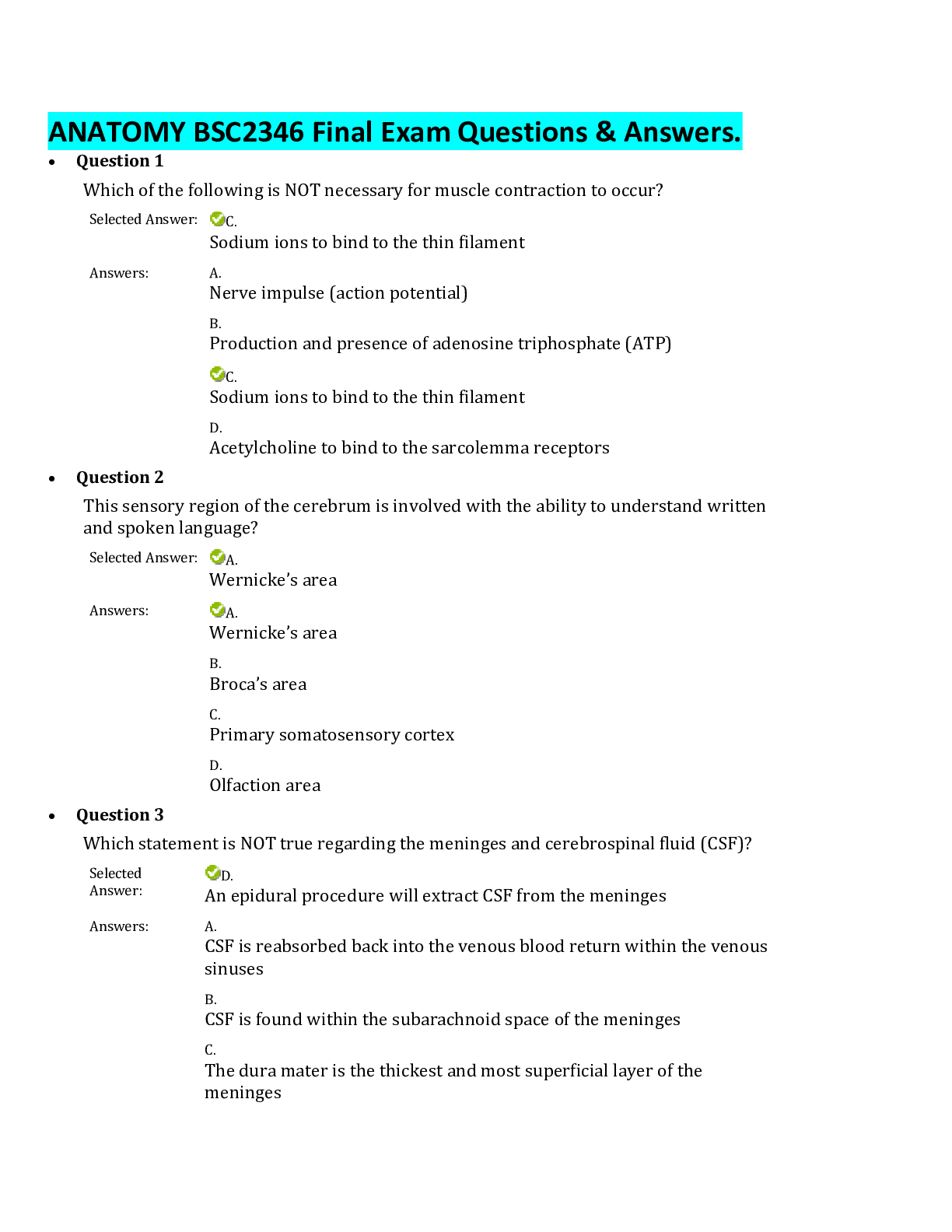

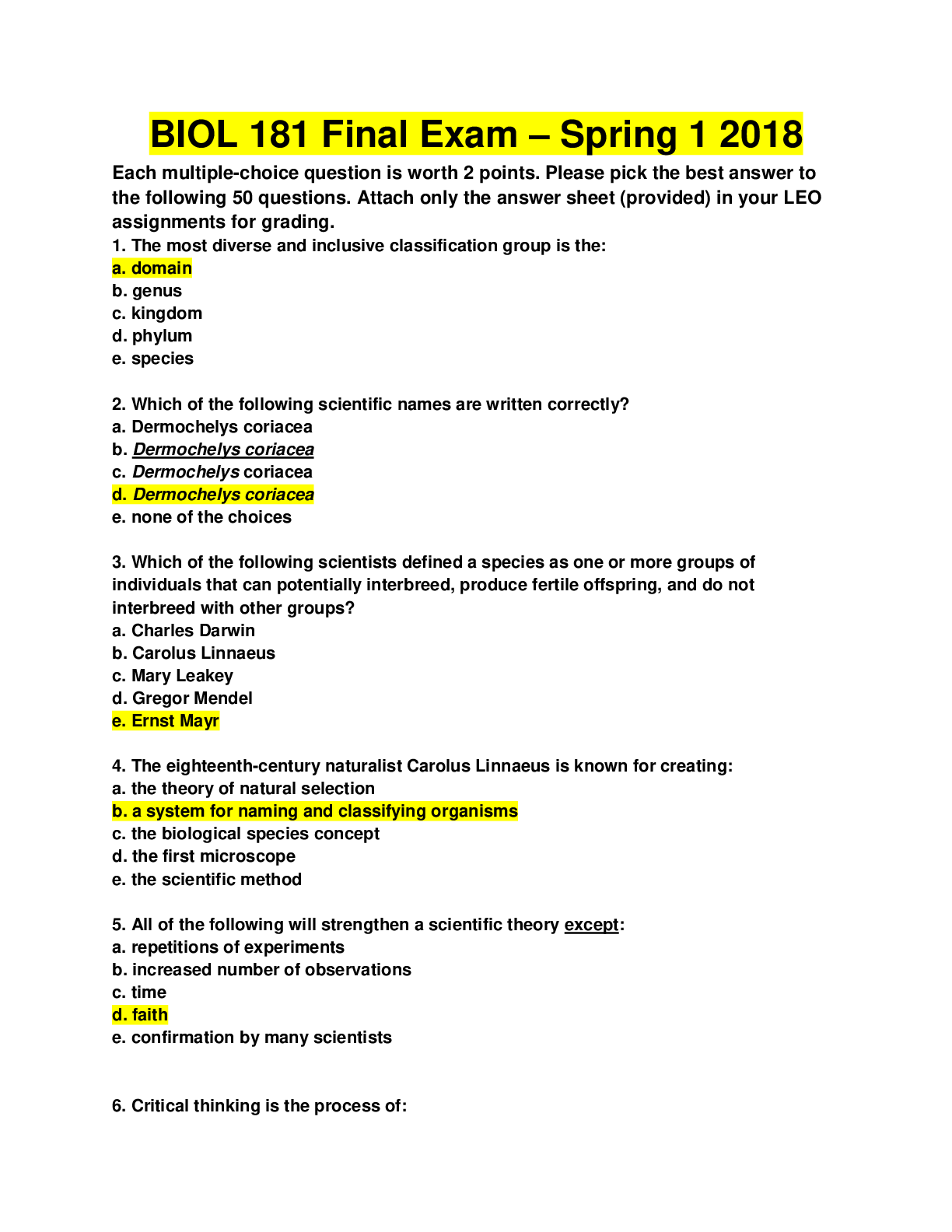
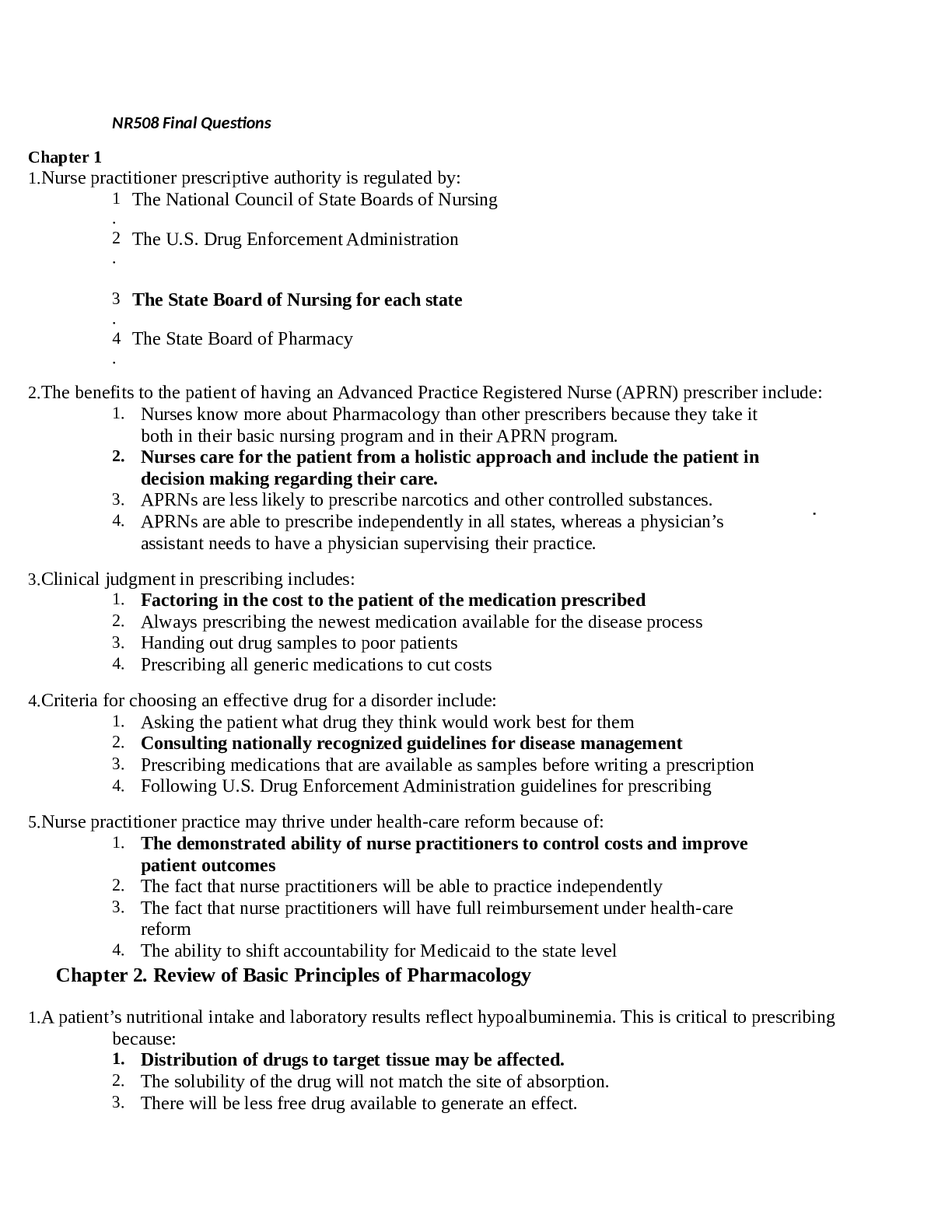

.png)

.png)

